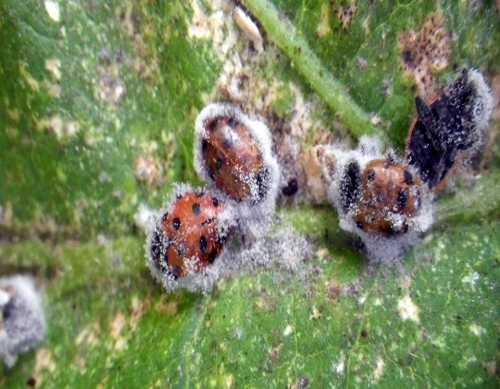By Thomas Ford
Plugs and vegetatively propagated materials are starting to arrive and despite your best efforts to keep pests at bay, you may inadvertently introduce new ones into your greenhouse environment.
Many of my greenhouse educator colleagues have long preached about inspecting plug shipments for pests, isolating them in a greenhouse as a precaution, and even rejecting a shipment if pest problems were visible. While this is sage advice almost every grower that I have ever worked with has never rejected a shipment of plugs or vegetative cuttings because they feared that they could not obtain replacements which would leave them with a major hole in their spring inventory.
While I recognize that schedules and production plans are critical to spring success, the introduction of INSV (Impatiens Necrotic Spot Virus) carrying thrips into your production area could leave an unwanted legacy in your operation that may be ultimately more costly than being short 20 flats of the latest and greatest petunia.
In baseball, if you go 2 for 3 you generally had a very good day. In the greenhouse industry if you inspect and isolate, but fail to control/ contain hitchhiking pests on plug and/or vegetative materials you are striking out with the bases loaded in the bottom of the ninth inning every time. One way that a grower can tilt the odds in their favor when plugs/cuttings arrive is to consider dipping plug trays or vegetatively propagated materials into a “bath” containing an appropriately labeled biologically-based insecticidal product.
The “white muscardine” fungus which is known as Beauveria bassiana is one of several entomopathogenic fungal organisms that are labeled for use in managing a wide array of insects in greenhouses and in nurseries. Beauveria bassiana as an entomopathogenic fungus have the capacity to penetrate the cuticle and kill almost every insect that it comes in contact with. While this is generally a good thing, Beauveria bassiana may also kill some biocontrol agents like ladybird beetles if they become exposed to it.

Ladybird beetles inadvertently killed by the “white muscardine fungus” (Beauveria bassiana) in a PA greenhouse.
Beauveria bassiana is considered by many entomologists as one of the more effective biocontrol agents to deploy as a plug or cutting dip. Insects and some mites when exposed to this entomopathogenic fungus typically die within 4-5 days after exposure.
Mycotrol WPO and BotaniGard 22WP are two Beauveria bassiana containing mycoinsecticides that are labeled for cutting/plug dips. BotaniGard 22WP or Mycotrol WPO are mixed at a rate of 1⁄4 to 1⁄2 oz per gallon of water or 2.5 to 5 oz per 10 gallons of water. As a best management practice, it is recommended that growers should only mix-up enough dip solutions to use in one day. Dip solutions are considered perishable and their efficacy will diminish significantly if their use is extended beyond that first day.
While most plants are not injured by dip solutions containing BotaniGard 22WP or Mycotrol WPO it is recommended that growers conduct a limited trial first before treating an entire lot of cuttings or plugs. When treating plugs or cuttings it is important to wet all plant surfaces to ensure good coverage and pest contact.
Mycoinsecticides like BotaniGard 22WP and Mycotrol WPO while legally labeled, list a variety of precautions that applicators must follow when deploying them in dip solutions. Adherence to the pesticide label is critical when applying any pesticide in a greenhouse environment. So please follow the label every time.
Insecticidal soaps are frequently recommended by some horticultural professionals as a means to increase the efficacy of the pre-plant cutting or plug dips. Unfortunately, if you read the labels of some of the most commonly used insecticidal soaps on the market like Kopa and M-Pede you will discover that this practice is not on their official EPA labels. In the case of the Gowan product, M-Pede you will find that they recommend that this product not be applied to cuttings or transplants because of injury concerns. Both Kopa and M-Pede have 12-hour REIs and will require that personal protective equipment be worn when entering treated areas prior to the expiration of the REI. While you may see insecticidal soaps recommended for incorporation into plant dips, this use cannot be legally recommended at this time.